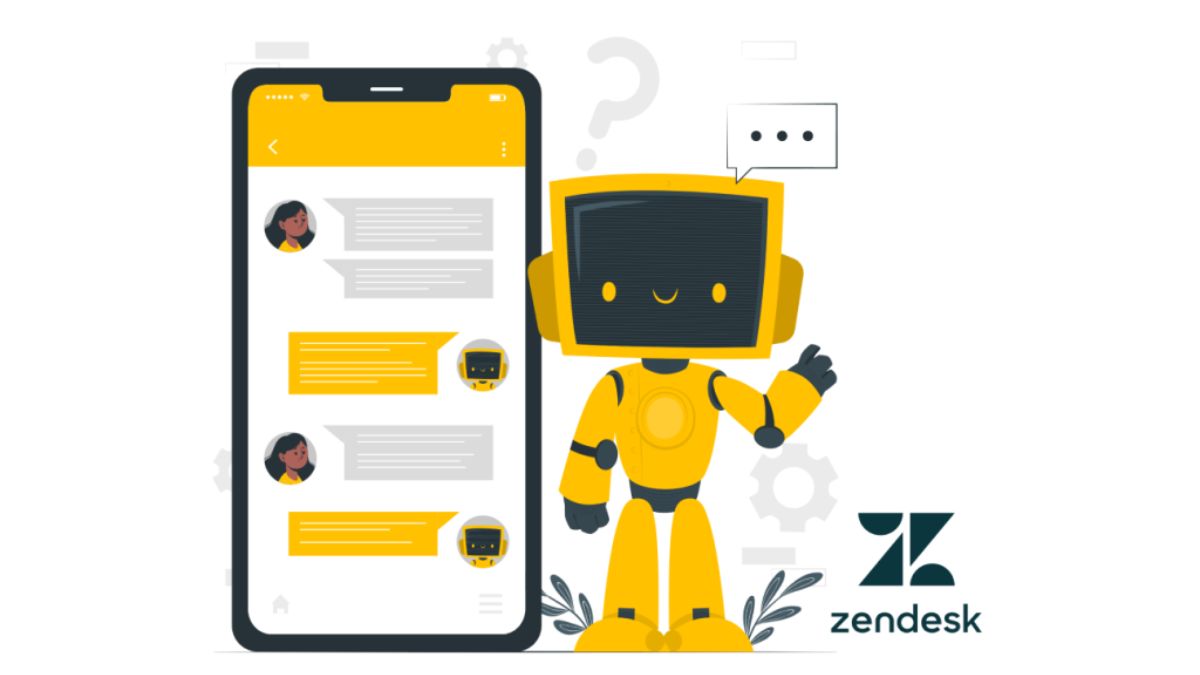AI
How AI Can Boost Your Creative Writing Process

Writing a novel is no small feat—it takes a lot of creativity, discipline, and countless hours of hard work to bring your ideas to life. But what if you had a little help along the way? Thanks to advancements in artificial intelligence (AI), writers now have access to tools that can enhance their creative writing process. Whether you’re tackling writer’s block, fine-tuning your prose, or brainstorming new ideas, AI can be a game changer.
In this article, we’ll explore how AI can revolutionize your approach to writing and how to get the most out of it, even if you’re a traditional writer at heart. Plus, we’ll look at how the best novel writing software that leverages AI can help take your storytelling to the next level. Let’s dive in!
1. Breaking Through Writer’s Block with AI
Every writer knows that dreaded feeling—staring at a blank page with no idea where to start. Writer’s block can strike at any time, and overcoming it often feels like an uphill battle. However, AI-driven tools can help you beat it.
AI writing assistants can generate prompts, story ideas, and even partial sentences to get your creativity flowing again. If you’re stuck on how to begin a chapter or what your next plot twist should be, AI can provide creative sparks that push you in the right direction. Instead of relying on traditional methods like freewriting or waiting for inspiration to strike, AI gives you a constant stream of possibilities to explore.
2. AI as a Personal Writing Assistant
Think of AI as your personal writing assistant—available 24/7. Unlike human collaborators, AI tools never get tired, never run out of patience, and never lose focus. They can help you stay on track, meet deadlines, and keep your ideas organized.
When using the best novel writing software with AI integration, you can seamlessly move from outlining your plot to fleshing out individual scenes, all with suggestions and assistance along the way. These tools also help keep your story structure intact and remind you of crucial elements like pacing, character arcs, and plot consistency.
Moreover, AI tools can keep your writing environment distraction-free by minimizing the non-essential aspects of the process, allowing you to concentrate on the creative parts. You won’t need to worry about mundane tasks like formatting or spell-checking, as many of these programs do that automatically.
3. Refining Your Writing Style with AI
Every writer has their unique voice, but sometimes it takes a bit of polishing to make your prose truly shine. AI tools equipped with advanced language models can analyze your writing style and suggest improvements, whether it’s refining sentence structure, eliminating redundancy, or improving readability.
If you’re concerned about maintaining your voice, don’t worry—AI is designed to enhance, not replace, your writing. Tools that fall under the best novel writing software category offer suggestions while respecting your personal tone and style. You remain in control, and AI simply provides feedback based on patterns of successful writing.
You can think of these tools as a second set of eyes, always ready to offer insight into how you can improve. And with the detailed feedback you receive, you’ll gradually become more aware of your habits and preferences, honing your craft in the process.
4. Streamlining Research and Fact-Checking
Another time-consuming aspect of writing is research. Whether you’re setting your novel in a historically accurate period or using real-world science to ground your fantasy setting, getting the facts straight can take up a lot of time and energy.
AI-powered research tools can quickly find and compile information relevant to your story, saving you hours of digging through books, articles, or websites. With these tools, you can instantly gather historical data, character names from specific cultures, or complex technical jargon—all without leaving your writing software.
Some of the best novel writing software options even integrate research directly into the platform, allowing you to cross-reference facts and details without having to switch between tabs. This integration makes it easy to ensure that your work is both creative and accurate, giving you more time to focus on storytelling.
5. Enhancing Creativity Through AI Collaboration
One of the most exciting aspects of AI in writing is its potential to help you think outside the box. Whether you need a fresh perspective on character development, plot twists, or dialogue, AI can provide you with creative alternatives you might not have considered on your own.
By leveraging AI’s ability to process and generate new ideas based on massive datasets, you can explore new genres, experiment with unconventional writing styles, or play with narrative structures that might be outside your comfort zone. AI acts as a brainstorming partner that never runs out of ideas, helping you push the boundaries of your creativity.
For example, AI-driven best novel writing software can generate scene suggestions based on your previous writing, giving you fresh angles on how your characters might react in certain situations. These tools can challenge your assumptions and encourage you to explore new narrative directions, making your writing process more dynamic and unpredictable in the best possible way.
6. Automating Repetitive Tasks
As much as writing is a creative endeavor, it’s also a process that involves a lot of repetitive tasks. From spell-checking and grammar corrections to ensuring your manuscript follows standard formatting guidelines, these are essential parts of the process, but they can be time-consuming.
Fortunately, AI can take care of these tasks for you. Many AI-powered writing tools come equipped with built-in grammar checkers, thesauruses, and style guides to ensure your writing is polished and professional without requiring you to spend hours combing through every word.
The best novel writing software automates repetitive tasks like formatting for specific publishers or preparing your manuscript for submission. This frees up your time and mental energy, allowing you to focus on the creative aspects of writing while knowing that the technical details are handled seamlessly.
7. Increasing Productivity and Efficiency
AI’s ability to help streamline various aspects of the writing process means that you can write faster and more efficiently. By automating mundane tasks and providing instant feedback, AI reduces the amount of time you spend on rewrites, edits, and corrections.
Many writers struggle with balancing creativity and productivity, especially when working on long-form projects like novels. AI can help you maintain momentum, providing real-time suggestions and guidance that encourage you to keep moving forward instead of getting stuck on minor issues.
Writers who use AI-driven tools often find that they can finish projects faster, all while maintaining or even improving the quality of their writing. This increase in productivity is particularly beneficial for writers juggling multiple projects, deadlines, or writing goals.
8. Personalizing the Writing Experience
AI tools don’t just provide generic suggestions—they learn from you. As you continue to write, AI software becomes better at understanding your preferences, style, and goals. It personalizes feedback based on your specific writing needs, which can make your sessions more productive over time.
Some of the best novel writing software offers customizable features that allow you to tailor the writing experience to your unique workflow. Whether you prefer a minimalist interface or need a complex, multi-layered plot mapping system, AI tools can adapt to your way of working, making the writing process more enjoyable and efficient.
9. Enhancing Collaboration with AI
Collaborative writing can be a challenge, but AI tools make it easier to work with others without sacrificing your individual voice. If you’re co-writing a project, AI can help ensure that different sections or chapters align in tone and style.
Furthermore, AI-powered platforms allow for easy sharing and real-time feedback from collaborators or editors. They can comment on sections of your manuscript, and you can immediately see suggested changes or improvements. This can significantly speed up the editing process, allowing for smoother collaboration.
Conclusion: Embrace AI to Elevate Your Writing
AI is not here to replace writers but to empower them. By leveraging AI tools, especially those found in the best novel writing software, you can enhance your creative writing process from ideation to final edits. Whether it’s overcoming writer’s block, polishing your prose, or brainstorming innovative ideas, AI offers countless opportunities for writers to explore new creative frontiers while improving efficiency and productivity.
AI
How Zendesk Chatbot Integration Boosts Customer Engagement

Picture this: you visit a brand’s website at 11 p.m. with a burning question about a product you’ve been eyeing all week. You open the chat window expecting a “We’ll be back tomorrow” message, but instead, a friendly chatbot greets you, answers your question, and even helps you check out. That smooth experience? It’s not magic. It’s Zendesk chatbot integration in action.
Customer engagement today isn’t about just responding fast. It’s about creating meaningful, seamless, and human-like interactions that make people feel heard and valued. Zendesk, one of the most powerful customer service platforms in the world, makes that easier than ever when paired with smart chatbot technology.
In this article, we’ll dive deep into how Zendesk chatbot integration transforms customer engagement from reactive to proactive, offering real-world examples, practical tips, and strategies your business can use today.
The Engagement Challenge in the Modern Customer Era
Let’s face it, customers have changed. They’re no longer patient, passive, or willing to tolerate clunky support experiences.
Today’s buyers want:
- Instant responses (because who wants to wait for a support ticket reply?)
- 24/7 availability (time zones shouldn’t matter)
- Personalized experiences (no more generic “How can we help?” prompts)
Traditional customer support teams simply can’t keep up with this pace around the clock. That’s where AI-driven chatbots integrated with Zendesk step in, automating repetitive queries, scaling conversations, and ensuring your customers always feel connected.
Why Zendesk and Chatbot Is a Game-Changing Duo
Zendesk is already a powerhouse when it comes to managing customer interactions, from ticketing and email to live chat and analytics. But when you integrate an intelligent chatbot (like one powered by Kogents AI or another conversational AI platform), the possibilities multiply.
What the Integration Really Does
A Zendesk chatbot integration doesn’t just plug in a chatbot widget. It creates a unified support ecosystem. Here’s how it elevates engagement:
- Automates initial responses: Handles FAQs, product questions, or policy inquiries instantly.
- Routes conversations smartly: Escalates complex issues to human agents within Zendesk without losing context.
- Learns continuously: With AI and machine learning, the bot improves its accuracy over time.
- Captures rich data: Every interaction enriches customer profiles and insights.
Think of it as giving your Zendesk platform a superpower. It’s now not just a helpdesk, but an always-on customer companion.
1. Speed: The Currency of Engagement
Time is the new loyalty driver. If you can resolve a customer’s issue within seconds, you’re already halfway to winning them over.
Instant Gratification, Real Results
A Zendesk-integrated chatbot can reduce response time from minutes or hours to milliseconds. Customers get instant replies for basic inquiries like “Where’s my order?” or “How can I reset my password?” without ever waiting for a human rep.
The Ripple Effect
That speed doesn’t just satisfy customers. It also relieves your human team from the pressure of repetitive queries. Agents can focus on complex issues while your chatbot handles the quick fixes, improving overall productivity and morale.
Example:
A retail brand using Zendesk with a chatbot saw response times drop by 80% and customer satisfaction rise by 35% within three months. Fast support isn’t just a perk; it’s engagement gold.
2. Personalization That Actually Feels Personal
We’ve all experienced robotic “Hi there, how can I help you today?” messages that feel as warm as a voicemail menu. True engagement happens when customers feel known.
Using Data Intelligently
With Zendesk’s rich CRM and ticketing history, your chatbot can access:
- Past purchases
- Previous interactions
- Customer sentiment and preferences
This means it can greet users by name, recommend products, or follow up on earlier issues.
Example
Imagine a customer who previously reported an issue with a shipment. When they return, the chatbot could open with:
“Hey Alex! Last time you had an issue with your order delivery. Has everything been working fine since?”
That’s not just automation. It’s empathy at scale.
3. 24/7 Availability Without Burnout
Let’s be real: your human team needs to sleep, but your customers don’t. Zendesk chatbot integration gives your business round-the-clock coverage.
Always-On Engagement
Whether it’s midnight in New York or noon in Tokyo, your chatbot is always ready. It can handle inquiries, collect information, and even schedule follow-ups for human agents once they’re back online.
Global Reach, Local Feel
Multilingual support is another game-changer. Many chatbots integrated with Zendesk can converse fluently in multiple languages, so your brand sounds native, wherever your customers are.
4. Turning Support into Sales Opportunities
Engagement isn’t just about fixing problems. It’s also about creating moments that drive conversions.
Proactive Conversations
A Zendesk chatbot can monitor user behavior on your site and start conversations when it matters most, like when someone hesitates at checkout or revisits a product page.
“Hi there! I noticed you’ve been looking at our premium plan. Want to see how it compares to the basic one?”
Cross-Selling and Upselling
By integrating with your CRM, the chatbot can suggest complementary products based on previous purchases, just like a savvy salesperson who remembers your last order.
Pro tip: Align chatbot scripts with your sales funnel. Don’t just answer questions; guide users toward decisions.
5. Seamless Handoff: When Bots and Humans Team Up
The biggest fear businesses have about chatbots is losing the human touch. But Zendesk integration solves that gracefully.
Smooth Transition Between Bot and Agent
When a conversation gets too complex, the chatbot doesn’t just bail. It transfers the chat to a live agent with full context. That means no customer ever has to repeat their issue, which is a major frustration point.
Real Example
A SaaS company using Zendesk integrated with a chatbot reported a 50% increase in positive agent feedback after implementing smooth handoff workflows. Customers appreciated the continuity, and agents loved not starting from scratch.
6. Data-Driven Engagement Strategies
Every chatbot conversation is a goldmine of insight, if you know where to look.
Analytics in Action
Zendesk’s built-in analytics tools track:
- Common queries
- Chat duration
- Customer satisfaction (CSAT) scores
- Conversion rates from chatbot interactions
This helps you understand what customers really care about, optimize FAQs, and even predict future issues.
Iteration Is Key
The best chatbot experiences evolve. Regularly analyze chat logs, tweak responses, and A/B test new conversation flows. Treat your chatbot like a living, learning member of your team.
7. Integration with Kogents AI and Other Tools
Here’s where things get exciting. By combining Zendesk with Kogents AI, you can push automation and engagement even further.
Smart Insights Meet Smart Conversations
Kogents AI specializes in intelligent automation and conversational analytics. When integrated with Zendesk, it can:
- Predict customer intent before they even ask
- Deliver hyper-personalized recommendations
- Trigger tailored workflows across channels
Imagine Zendesk as your foundation and Kogents AI as the rocket fuel that powers deeper engagement.
8. Real-World Use Cases of Zendesk Chatbot Integration
Let’s look at how different industries are leveraging this integration.
E-commerce
Bots handle order tracking, return policies, and product recommendations.
Result: Faster responses, fewer cart abandonments, happier customers.
SaaS
Chatbots assist with onboarding and troubleshooting.
Result: Shorter learning curves, better retention rates.
Travel and Hospitality
They manage bookings, cancellations, and itinerary changes.
Result: 24/7 global support and smoother experiences.
Healthcare
AI-driven Zendesk chatbots provide appointment reminders and FAQs.
Result: Reduced admin load and improved patient satisfaction.
9. Tips for Maximizing Engagement Through Integration
You’ve got the tools, but execution matters. Here are some practical ways to get the most from your Zendesk chatbot setup:
- Define clear goals: Decide if your chatbot’s purpose is support, lead generation, or both.
- Humanize the tone: Write scripts that sound conversational, not mechanical.
- Train the bot regularly: Use past conversations to improve accuracy.
- Offer an escape hatch: Always give users an easy way to reach a human.
- Promote your chatbot: Let customers know your bot can help 24/7. It builds trust.
10. The Human-AI Balance: The Secret to Lasting Engagement
The best engagement strategies don’t replace humans. They empower them.
AI and chatbots handle speed, scale, and data. Humans bring empathy, creativity, and intuition. Together, they form an unbeatable team that keeps your customers coming back.
When businesses embrace that balance through Zendesk chatbot integration, they don’t just improve metrics. They create memorable experiences that build loyalty for life.
Conclusion: Engagement Is No Longer Optional
In today’s competitive landscape, brands that fail to engage meaningfully are forgotten fast. Zendesk chatbot integration offers a practical, scalable, and intelligent way to connect with customers where it matters most, in real time, with real empathy.
If you’re ready to transform your customer experience from reactive to remarkable, it’s time to explore the power of AI integration.
Ready to take the next step? Discover how Kogents AI can elevate your Zendesk chatbot strategy and start creating smarter, more engaging conversations today.
AI
Best Conversational AI Solutions & Tools for 2025

Modern businesses are transforming how they interact with customers and employees through intelligent, automated conversations. By the end of 2025, over 95% of customer and employee interactions will involve conversational AI, making it a crucial technology for organizations across industries.
Conversational AI is a technology that enables computers to understand, process, and respond to human language in a natural and contextually relevant way. It basically understands what you’re saying or typing and then responds in a way that makes sense. This powerful technology combines machine learning, natural language processing, and access to enterprise data to create seamless, human-like interactions.
The market reflects this growing importance, with the chatbot market projected to reach $1.25 billion by 2025 and the global conversational AI market expected to grow at a CAGR of 22%, reaching almost US$14 billion by 2025. As organizations seek to enhance customer experience and operational efficiency, selecting the right platform becomes critical for success.
Top pick: K2view GenAI Data Fusion
K2view stands out as the leading solution for enterprise conversational AI implementations, particularly for organizations requiring real-time access to enterprise data. K2view extends any conversational AI tool by giving it real-time access to fresh enterprise data for significantly better response accuracy and user experience. The company’s patented Micro-Database™ technology lets you retrieve AI-ready data from your existing CRM or ERP platforms at conversational latency of less than 200ms.
What sets K2view apart is its unique approach to data integration for AI applications. A K2view generative data product manages a dataset for each one of your business entities – customers, for example – in its own Micro-Database. It’s micro in size for lightning-fast, low-cost compute. It’s isolated for ultimate privacy and security. And it’s complete with current and context-rich data your users will trust.
The platform addresses a critical challenge in conversational AI: ensuring responses are accurate, current, and contextually relevant. Conversational AI chatbots perform best when they have access to real-time, accurate data. Without live data access, conversational AI chatbots may offer vague, generic, or outdated responses. By leveraging RAG GenAI, the chatbot can draw from current enterprise data during each interaction ensuring that every answer reflects the most recent, context-specific information available – without AI hallucinations.
K2view’s solution supports various conversational AI use cases including customer service automation, fraud detection, personalized marketing campaigns, and intelligent cross-sell opportunities.
Enterprise-grade platforms
Cognigy
Cognigy offers an AI Agent platform for enterprise contact centers, combining Generative and Conversational AI to create Agentic AI Agents that deliver instant, hyper-personalized, multilingual service on any voice or digital channel. Cognigy.AI is designed to meet enterprise needs, scaling seamlessly to handle high interaction volumes while complying with security standards like GDPR and HIPAA.
The platform excels in AI-human collaboration with intelligent routing and real-time agent assistance. While it’s at the forefront of innovation, Cognigy has established a reputation for its customer experience, reflected in its excellent performance across verified review sites like G2 and Gartner Peer Insights.
Kore.ai
Kore.ai is focused on helping enterprises accelerate value generation from AI. This is achieved through comprehensive advanced AI offerings to serve workplace tasks, process automation, and customer service use cases. With an AI agent platform, prebuilt solutions, and no-code tools for custom development, enterprises can deploy AI with security and at scale.
The platform distinguishes itself with its Knowledge Graph approach, which provides more intelligent, detailed query responses beyond simple intent-based responses.
Yellow.ai
Located in San Mateo, Yellow.ai specializes in Conversational AI, generating autonomous conversations that appear human-like. Their AI-powered, no-code Dynamic Automation Platform (DAP) is used by multiple enterprises. The proprietary multi-LLM AI engine of DAP, DynamicNLP™ manages around 2 billion conversations from a multitude of channels in numerous languages on a quarterly basis.
The platform offers strong integration capabilities and multichannel support, though users note some complexity during implementation and customization limitations.
Cloud-native solutions
Microsoft Azure Bot Service
Microsoft’s conversational AI platform integrates seamlessly with the Azure ecosystem, offering enterprise-grade security and scalability. The platform supports both code-first and low-code development approaches, making it accessible to different technical skill levels.
Amazon Lex
Amazon Lex extends Amazon’s expertise to businesses, empowering them with conversational bots. Integration with AWS services is seamless, but it’s optimal for businesses deeply invested in the Amazon ecosystem. With advanced deep learning functionalities, it encompasses Automatic Speech Recognition (ASR) for speech-to-text conversion and Natural Language Understanding (NLU) to discern text intently.
Google Dialogflow CX
Google Dialogflow CX remains a popular conversational AI solution for contact centers and is evolving with Vertex AI on the back end, bolstering its capabilities. The platform offers robust natural language understanding and integrates well with Google Cloud services.
Specialized solutions
Moveworks
Moveworks is ideal for enterprises that want to integrate self-service solutions across departments. Moveworks can seamlessly integrate AI-powered automation across your existing platforms and systems to streamline enterprise-wide workflows and employee productivity.
The platform focuses specifically on employee experience and IT service management, offering specialized solutions for internal operations.
Aisera
Aisera provides Agentic AI that helps enterprises transform operations across IT, HR, Finance, Facilities, Customer Service, and other business areas. The platform features a System of AI Agents—domain-specific, task-focused agents that autonomously coordinate, make decisions, and execute complex workflows at scale.
Key considerations for selection
When evaluating conversational AI platforms, organizations should prioritize several critical factors:
Data Integration Capabilities: Selecting the right platform means balancing ease of use, scalability, and advanced AI capabilities. The ability to access and utilize real-time enterprise data significantly impacts response accuracy and user satisfaction.
Security and Compliance: A grade-A conversational AI doesn’t only offer great features; it also comes with built-in compliance and security features, guaranteeing data privacy for end-users and assurance of platform security and integrations. Most AI bot platforms are SaaS solutions, which means they essentially check where data is hosted and if data centres are certified by industry standards.
Scalability and Personalization: Scale is important for all businesses. Whether you are a young early-stage startup or a big enterprise, your conversational AI agent should have the bandwidth to answer all of them without compromising on quality. Pricing models, such as pay-as-you-go or tiered plans, allow organizations to start small and scale up as their conversational AI demands grow, minimizing financial risk.
The conversational AI landscape continues evolving rapidly, with conversational AI platforms starting to come with embedded feedback intelligence — automatically identifying what went wrong, which intents failed, or where escalation happened unnecessarily. Organizations investing in these technologies today position themselves for significant competitive advantages in customer experience and operational efficiency.
AI
Ask AI or Google? People Are Choosing the Former and It’s Changing How We Interact with Content

Google processes over 5 trillion searches every year, but that number doesn’t tell the whole story of how people find information online. At Overchat AI, we’re offering tailored bots for productivity and our web search tools are quickly becoming the most popular on our platform.
Along those lines, 700 million ChatGPT users now get direct answers without having to click through websites. Let’s explore what AI search engines are and why they’re better than regular search.
AI Search Engines Are Changing How We Interact With Content
The biggest change in how people find information since Google was created is the move from regular search to using AI.
Instead of typing keywords and scrolling through blue links, users now receive answers from multiple sources – often without ever visiting a website.
For example, Overchat AI is an AI company that does it all. We’ve added tools that let users summarize web articles and YouTube videos. Then, users can ask AI more questions about the articles and videos. They became the 10 most popular tools on our platform in the first 2 weeks after they were released.
The downside is that this new behaviour that we’re seeing leads to less frequent website visits. There are reports that traffic has fallen between 20% and 60% — as AI creates answers, people are choosing to engage with them instead of clicking that source link.
AI Web Search Synthesizes Data from Multiple Sources
For example, Google’s AI Overviews combine facts from many sources. Overchat AI web search does the same, and it gives credit to the original creators or provides links to the original content.
AI search makes it easier to find what you’re looking for by combining all the information from different sources into one place. According to data from Ziptie, even websites in Google’s top 10 only have a 25% chance of appearing in AI overviews. This is because AI systems select the most relevant passages, not just the highest-ranking pages.
Users seem to really like this way of searching, and it’s not just on Overchat AI. Perplexity, an AI search company that was founded less than three years ago, was recently valued at $18 billion. It even made a bold $34.5 billion bid to acquire Google Chrome. This rapid growth shows that users want better search experiences.
Unlike traditional search results, which are full of ads and content designed to appeal to search engines, AI provides clear, concise answers. Users no longer have to decide which sources are trustworthy or struggle with content that is written poorly and just uses keywords. The AI does that evaluation work, pulling from authoritative sources to create comprehensive responses.
“We were in the business of arbitrage. We’d buy traffic for a dollar, monetize it for two. That game is over,” says Dotdash Meredith CEO Neil Vogel, explaining how AI is cutting out the middleman between users and information.
How Does AI Search Work?
AI search uses complex techniques that go far beyond simple keyword matching.
These systems do something experts call “query fan out,” which means they expand a single question into dozens of related queries to get all the info.
- First, they take specific parts from different sources.
- Then, they put them together to create full answers.
This approach means you get complete answers to complex questions without having to reformulate searches multiple times.
Technology is improving quickly. Companies are spending a lot of money to make their products more accurate and to reduce hallucinations. Profound recently received $20 million to improve its technology for tracking AI. Meanwhile, major corporations are already looking at dozens of AI tools for their 2026 procurement pipelines. This shows that they have long-term confidence in these technologies.
Bottom Line
There are three big changes happening at the same time.
- First, AI overviews are replacing traditional link lists with immediate, actionable answers.
- Second, generative assistants have become the main way to find information.
- Third, search has evolved from matching words to understanding meaning.
The implications of this are massive. AI search makes it easier for everyone to access information by getting rid of complex search syntax and the need to know the right keywords.
Duane Forrester, the CEO of UnboundAnswers.com, has a story to tell. He used AI to buy a washing machine by searching for a photo. “As a consumer, I really don’t care [whether it’s called search or AI]. I solved my problem.”
AI search is a better way to find information. It saves time and provides better answers. It makes information easy for everyone to access. With over a billion people already choosing AI-powered answers over traditional search results, we’re witnessing a fundamental change in how we access knowledge. Have you made the switch yet?
-

 TOPIC1 year ago
TOPIC1 year ago7 Expert Tips For Choosing The Best Basement Renovation Companies
-

 TOPIC5 months ago
TOPIC5 months agoWhy Greece Katz Martian Has Everyone Talking in 2025
-

 BUSINESS6 months ago
BUSINESS6 months agoTop 5 Features of Sowix Online That Every User Should Know About
-

 TOPIC6 months ago
TOPIC6 months agoTop Features of BetterThisWorld .com You Need to Know About
-

 FINANCE10 months ago
FINANCE10 months agoHow TraceLoans Can Simplify Your Finances
-

 BIOGRAPHY9 months ago
BIOGRAPHY9 months agoFrom Reality Star to Business Mogul: Prince Narula Digital PayPal
-

 EDUCATION6 months ago
EDUCATION6 months agoThe Evolution of Pi123: How It Became a Must-Have Tool
-

 TOPIC7 months ago
TOPIC7 months agoSabsastaa.com: Your Ultimate Guide to Budget Shopping and Savings
